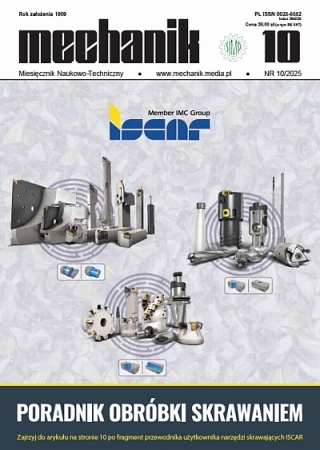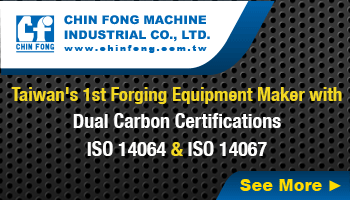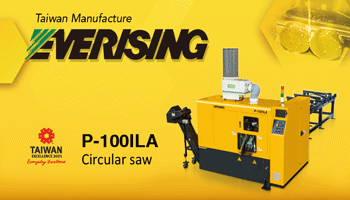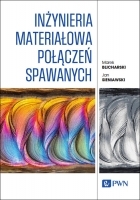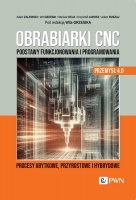Wpływ zużycia ostrzy narzędzi SPRT na kształtowanie powierzchni *
The influence of SPRT wear on the creation of surface
Mechanik nr 10/2016 - X Szkoła Obróbki Skrawaniem, XXXIX Naukowa Szkoła Obróbki Ściernej
STRESZCZENIE: Opracowanie dotyczy niekonwencjonalnych narzędzi z ostrzami obrotowymi (RT – rotary tools) typu SPRT (self-propelled-rotary-tool). Przedstawiono badania i analizy zmian struktury geometrycznej powierzchni spowodowane wzrostem zużycia ostrzy w całym okresie trwałości.
SŁOWA KLUCZOWE: SPRT, powierzchnia, zużycie, chropowatość
ABSTRACT: The results of studies and analyzes changes in the structure of geometric surfaces caused increase of wear tools are presented. Research focuses on unconventional tools with the rotary edges (RT rotary tools) type SPRT (self-propelled-rotary-tool).
KEYWORDS: self-propelled rotary tool (SPRT), tool wear, roughness, surface
BIBLIOGRAFIA / BIBLIOGRAPHY:
- Cieloszyk J., Zasada M. „The analytical basis for evaluation and comparison of the effectiveness of modern turning with rotary and conventional tools”: http://wbmiz.put.poznan.pl/wos/007-014 M14. WoS Paper 01.pdf.
- Cieloszyk J., Zasada M. „An analysis of cycle time in modern turning operations carried out with rotary tools” http://wbmiz.put.poznan.pl/wos/015-022 M14. WoS Paper 02.pdf.
- Davim J.P. „Machining of Hard Materials”. London, Springer-Verlag London Limited, 2011.
- Dessoly V., Melkote S.N., Lescalier C. „Modeling and verification of cutting tool temperatures in rotary tool turning of hardened steel”. International Journal of Machine Tools and Manufacture. Vol. 44, (2004): pp.1463÷1470.
- Ezugwu E.O. „High Speed Machining of aero-engine alloys” Journal of the Brazilian Society of Mechanical Sciences and Engineering, ABCM. Vol. XXVI, No. 1 (2004), pp. 532÷539.
- Ezugwu E.O. „Key improvements in the machining of difficult-to-cut aerospace superalloys”. International Journal of Machine Tools & Manufacture. No. 45 (2005), pp.1353÷1367.
- Kishawy H.A., Becze C.E., Mcintosh G.G. „Tool performance and attainable surface quality during the machining of aerospace alloys using self-propelled rotary tools”. Journal of Materials Processing Technology. Vol. 152 (2004): pp. 266÷271.
- Kishawy H.A., Wilcox J. „Tool wear and chip formation during hard turning with self propelled rotary tools”. International Journal of Machine Tools & Manufacture. Vol. 43. (2003), pp. 433÷439.
- Nakajima K. et al. „Effect of rotary cutting tool posture on machining performance utilizing multi-tasking lathe”. Journal of Advanced Mechanical Design, Systems, and Manufacturing. Vol. 2, No. 2, (2008), pp. 532÷539.
- Sasahara H., Kato A. et al. „High-speed rotary cutting of difficult-to-cut materials on multi tasking lathe”. International Journal of MachineTools and Manufacture. Vol. 48, No. 7÷8, (2008), pp. 841÷850.







